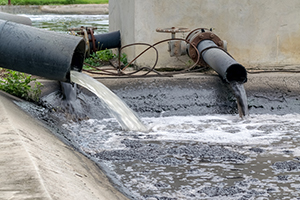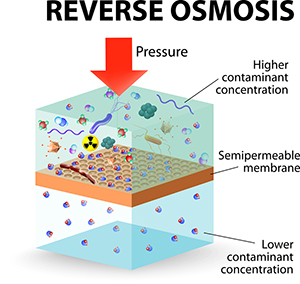Water Quality in Phoenix – Will Phoenix Be the Next Flint, MI?
Date: October 11, 2016
Water Quality Standards and Phoenix Water Quality
The EPA estimates that 90 percent of tap water in the United States is okay for consumption. With that said, there will always be variations in how well each city and state are able to fully service and condition the water before streaming it into homes. But what about the other 10 percent of tap water in the United States that’s not safe for consumption?
Toxic water quality in places like Flint, MI, and Hinkley, CA have been hot topics in past stories, but there are significant water quality issues in Phoenix, AZ. Dozens of cities in and around the Phoenix area continue to report record highs of toxic chemicals, lead, and Erin Brockovich’s chromium-6. The legal limits for contaminants in tap water have not been updated in almost 20 years, and in some cases, chemicals are unregulated or at risk for deregulation. According to the nonprofit Environmental Working Group (EWG),
“The EPA’s national survey of chromium-6 concentrations in drinking water revealed that the contaminant was found in more than three-fourths of water systems sampled, supplying more than two-thirds of Americans. An EWG analysis identified Phoenix, Saint Louis, and Houston as the largest cities with the highest levels of chromium-6.”
THE CONTINUING WATER CRISIS IN FLINT, MICHIGAN
The Flint city drinking water crisis began in April 2014 when Flint residents began noticing a change in their water quality. Orange, brown, and smelly water emerged in homes from faucets. Children became sick, and high levels of lead poisoning were being reported. A State of Emergency was declared. As we begin 2020, and a new decade, the Flint water crisis is still going on.
Up until March 2014, Flint received its water supply from Lake Heron, but then switched companies, instead of purchasing water that would be drawn from Flint River. Soon reports came rolling in that the water quality had significantly declined – complaints that were dismissed by the Michigan Department of Environmental Quality (MDEQ). Despite companies like General Motors complaining about the corrosiveness of the water on car parts, and places like the Flint Public Library declared the water undrinkable after noticing that the water from the faucets and toilets was discolored, the MDEQ maintained that “that there is no imminent threat to public health” and that the nature of the problem was that the issue had been “communicated poorly” to the public.
In September 2015, a team working under Dr. Marc Edwards – an engineering professor at Virginia Tech, and an expert on municipal water quality – was sent to study the water quality in Flint. Dr. Edwards published a report finding that Flint water was “very corrosive” and “causing lead contamination in homes”. He concluded that “Flint River water leaches more lead from plumbing than does Detroit water. This is creating a public health threat in some Flint homes that have lead pipe or lead solder.” Shocked by the extent of the contamination and by authorities’ inaction to address the problem despite their knowledge of the contamination, Edwards stated, ” the very agencies that are paid to protect these residents from lead in water knew or should’ve known after June at the very very latest of this year, that federal law was not being followed in Flint, and that these children and residents were not being protected”. His research teams revealed that at least a quarter of Flint households had levels of lead above the federal level of 15 parts per billion (ppb) and that in some homes, lead levels were at 13,200 ppb.
WHAT DOES THE FLINT WATER CRISIS HAVE TO DO WITH PHOENIX, AZ?
You might think that the Flint River lead contamination is far removed from the Phoenix area water supply, but recent reports suggest that Arizona residents may have a serious water quality issue on their hands.
The City of Phoenix water quality website states that “More than five million tests and measurements are conducted each year to ensure high-quality tap water in Phoenix. It is tested for more than 100 substances, and is monitored throughout the year to ensure that it meets the rigorous standards set forth by the U.S. Environmental Protection Agency (EPA), the Arizona Department of Environmental Quality, and the Maricopa County Environmental Services Department”.
And yet water quality issues are emerging more than is comfortable for most Arizona water-drinkers. Some are regulated by the EPA. Others are not. All are worrying.
LEAD IN ARIZONA’S WATER SUPPLY
According to the EPA, lead and copper in drinking water are mainly due to the corrosion of service lines and household plumbing materials. Older homes with lead pipes, lead solder or components containing lead are at highest risk for lead contamination. Lead and copper regulations are in place to protect public health by minimizing lead and copper levels in drinking water, primarily by reducing water corrosivity. Other zip codes are at risk for increased lead count in their water supply, including parts of Chandler, Mesa, Scottsdale, Peoria, Glendale, Goodyear, and others.
ERIN BROCKOVICH’S CHROMIUM-6 IN AZ WATER SUPPLY
So the presence of lead isn’t as terrifying as in Flint, MI, but could there be other heavy metals that we should be aware of in our water supply?
The sensational story of Erin Brockovich taking on corporate giant PG&E exposed deeply toxic levels of hexavalent chromium tainting the water quality of Hinkley, CA. Numerous Hinkley residents were left with debilitating and deadly diseases like asthma, lung cancer, ulcers, atherosclerosis, neurodegenerative disorders, congenital disorders, DNA damage, and much more. Now keep in mind that 1 part per billion is the size of a single drop in an Olympic sized swimming pool. The average hexavalent chromium levels in Hinkley were recorded as 1.19 parts-per-billion (ppb) with an estimated peak of 20 ppb.
From the EPA.gov website:
“EPA has a drinking water standard of 0.1 milligrams per liter (mg/l) or 100 parts per billion (ppb) for total chromium. This includes all forms of chromium, including chromium-6. Water systems are required to test for total chromium. The current standard is based on potential adverse dermatological effects over many years, such as allergic dermatitis (skin reactions). EPA regularly re-evaluates drinking water standards and, based on new science on chromium-6, began a rigorous and comprehensive review of its health effects in 2008.”
- S. Census data for July 2018 estimated Maricopa County has a population of 4,410,824. Phoenix is the fourth most populous county in the United States and continues to grow. The most recent testing for the 80 utilities providing tap water to residents Maricopa County ranged from a single facility testing at 00 pbb, with the remaining 79 locations testing to 54 pbb, for an average of 7.9 pbb. That’s a lot of harmful potential lurking in our water supply. And that’s just the beginning. There are a lot of other potentially toxic substances in our water supply, even though the government has deemed Phoenix water as safe to drink.
The EPA report that began in 2008 is still pending. In September 2019, the Federal government announced repeals and rollbacks of EPA clean water regulations that provided consumer protections from hazardous chemicals like pesticides. Consumers need to understand what they can do to protect themselves and their families from toxins and other contaminants in tap water.
While potable, there are also very high levels of minerals in our local Valley water, particularly calcium and magnesium. These minerals can build up into harmful deposits in the pipes of our home, and make our tap water less than ideal for cooking, cleaning, or drinking. The solution to both problems is to install a reverse osmosis water system. Reverse osmosis is the most convenient and effective method of water filtration. Originally designed to desalinate seawater, bottlers, and homeowners can now employ the process to rid drinking water of heavy metals and other detrimental contaminants right at the point of use!
Installing a reverse osmosis system can help improve water for drinking, cooking, and other important uses, and is better for the environment as it helps reduce the need for bottled water. This type of water purification system removes contaminants such as arsenic, nitrates, sodium, copper and lead, some organic chemicals, and the municipal additive fluoride. It helps cleanse your water so you are ingesting the good stuff – and only the good stuff.
At Donley Service Center we believe your family deserves clean, pure, and healthy water right from your tap. A reverse osmosis purification system is more convenient and far less expensive over time, not just in water costs, but in potential health costs by helping reduce lead, chromium and other harmful chemicals from the water you drink. Choose Donley and call us to install your reverse osmosis water system today.




